Association of Pag Cheese Producers Seeks Lowering of VAT
September the 27th, 2022 - The Association of Pag cheese producers are seeking VAT reductions on cheese and milk products from the government, given the fact that Croatia has placed particularly high VAT rates on cheese compared to many EU member states.
As Morski writes, in Italy, this rate stands at 4%, in France 5.5%, in Germany 7%, while in this country, VAT on cheese is a whopping 25%. That is why Pag cheese producers and small dairy farms have sent a request to the Croatian Government in which they're asking for a reduction in what they consider to be too high value-added tax rates. If that happens, the consumption of cheese would increase, and its price for the end consumer would also be lower.
Without tax relief, the business outlook for cheesemakers doesn't look great.
''The Association of Pag Cheese Producers, together with the Association of Croatian Small Dairies, has decided to initiate a request to reduce VAT on cheese and dairy products. Croatia has the highest VAT rate on cheese and dairy products of all EU member states. Just for comparison, in Slovenia, the VAT rate is 9.5%, in Italy and Spain it is 4%, in Ireland the VAT rate is 0%,'' said Martina Pernar Skunca, president of the Pag Cheese Producers Association.
''We propose a VAT rate of 0-5%, so we also accept 5% as a kind of normal VAT rate for dairy products,'' said Sime Gligora, the director of the Gligora cheese factory.
''What's illogical is that the VAT on milk is 5% and the state subsidises milk production and encourages it, while on the other hand, the VAT on cheese and dairy products is so high,'' added Pernar Skunca.
I'm tired of the barren bureaucracy, of all of these piles of paper. Most of this could be reduced, simplified, arranged to be simpler, to be easier. A big problem is created by VAT, which takes most of the income for itself. It's clear to all of us that the state also has to live on something and those institutions that are also at our service, don't get us wrong, but I think that this industry should be protected not only on the island of Pag, but across the whole of Croatia because it's now on the verge of extinction,'' said Sime Pernjak, the co-owner of a cheese factory.
This summer's drought has also left unfavourable consequences. The sheep which graze Pag did not find enough food, so the livestock had to be supplemented, and compared to last year, the costs have doubled.
''From the very start when it comes to livestock, feed prices rose. Fodder rose because artificial fertiliser rose. Fertilizer prices have risen due to energy costs. And therefore the price of milk has also shot up. So, the price of milk is 50% higher than it was last year. Energy prices went up, electricity is three times more expensive, gas is twice as expensive, and the costs of packaging, cardboard, foils all went up,'' said Gligora.
It can't get any worse, Pag cheese producers have warned, aware that they cannot replace the increase in input costs with a higher price of cheese.
''The big thing is that we buy milk with 5% VAT, and the output VAT is 25%. The maths here is crystal clear,'' said Pernjak.
''By reducing the VAT rate on cheese and dairy products, our products would be more competitive on the market, their consumption would increase, and this would be good for everyone because there would be a greater inflow into the state coffers. So we believe that in these difficult conditions on the market and in this situation when everything has become more expensive - both raw materials and energy products - that it is really necessary to reduce VAT because it is the highest in all of Europe. As for Pag cheese, it is a premium product, and the point is that dairy farmers on the island of Pag don't live only on Pag cheese. We also have goats, we buy significant quantities of cow's milk from Croatia and goat's milk which also comes from Croatia. The price of hard cheeses has increased. We've minimally increased our prices. All hard cheeses are more expensive products and you simply have to make a compromise so as not to lose customers. Up to a certain point you can suffer at the expense of your own margins, but then there comes a point where you can't do that. If the dairies aren't operating well, who will pay the farmers for milk but the dairies?'' added Pernar Skunca.
''We bring in milk from Lika, Zagorje, Slavonia, Istria...'' noted Pernjak.
''What is very important is that we're the biggest purchasers of cow's, goat's and sheep's milk and, unlike other dairies, we produce the most products that have this high VAT,'' added Pernar Skunca. That's why only with a lower VAT rate can we overcome this never-worse time for cheesemakers, they explained from the Association of Pag Cheese Producers - now they are already worried about their jobs but also the preservation of the centuries-old tradition of cheesemaking on the island, writes HRT.
For more, make sure to check out our dedicated business section.
Croatian Cheeses: An Introductory Guide
March 2, 2022 - When traveling, experiencing a country’s gastronomical delights is at the top of my to-do lists. Food easily reveals a tremendous amount about the country’s culture and customs, reflecting the unique history, identity, values, and beliefs of its inhabitants. This is definitely the case when it comes to Croatia’s culinary heritage.
There is so much to cover when it comes to Croatia’s food scene. Despite the country’s relatively small size, there is an astounding amount of regional variety.
Let’s get into the swing of things by introducing one of my favorite Croatian products - cheese!
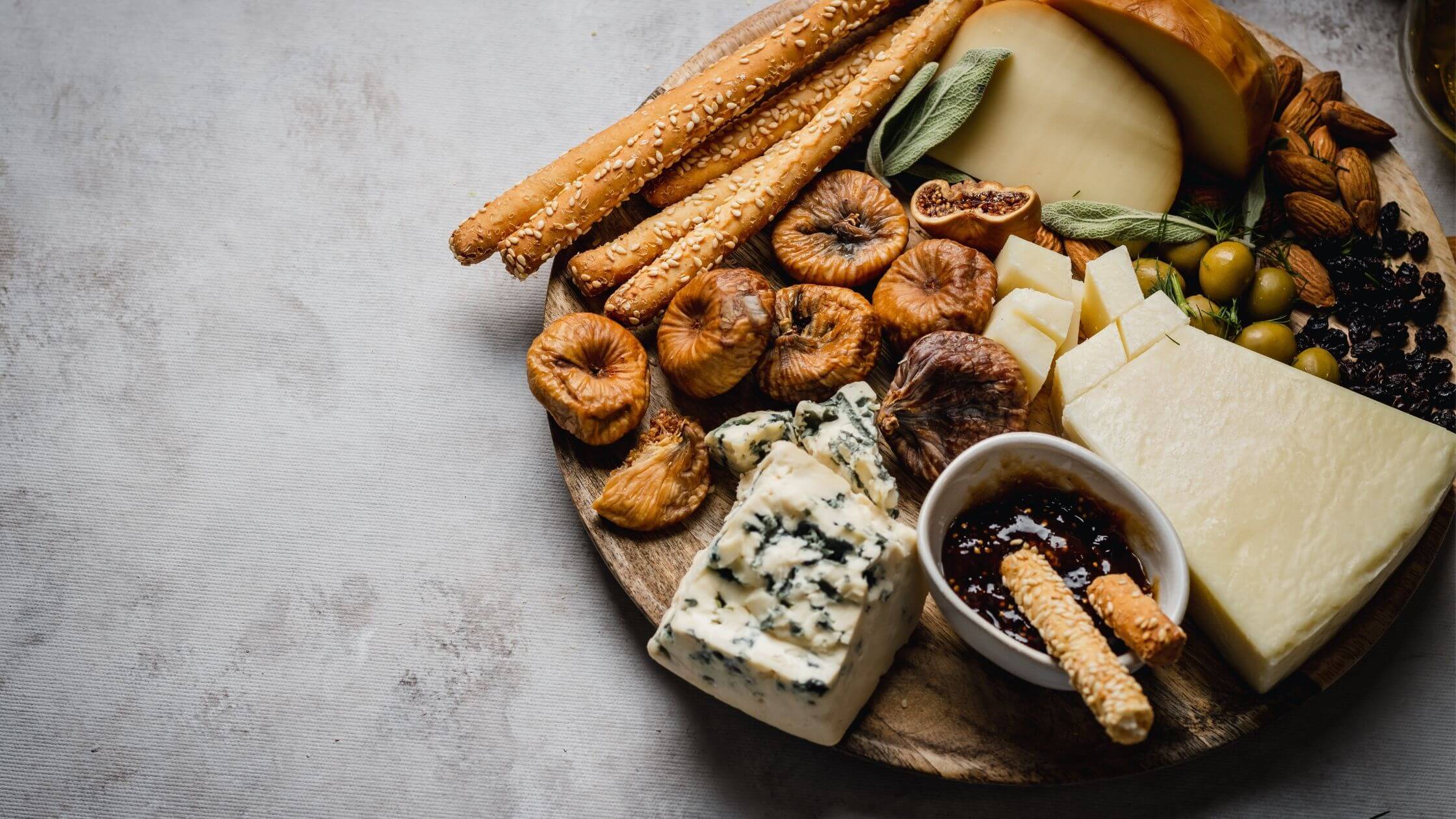
Can't resist a gorgeous cheese plate. Image: Pexels
Oldest cheese found in Croatia
Sir (pronounced s-ee-r), cheese has been an integral part of Croatian history from as far back as 7,200 years, where researchers from Pennsylvania State University found traces of the world’s oldest cheese along the Dalmatian coast.
Although records from the time are scarce, it is theorized that during the 4-5th century BCE, Thracian and Illyrian sheep farmers accidentally produced the first cheeses when milk they kept stored in bags spontaneously fermented and curdled. Today, cheese features heavily in both sweet and savory dishes throughout Croatia such as Burek and Strukli.
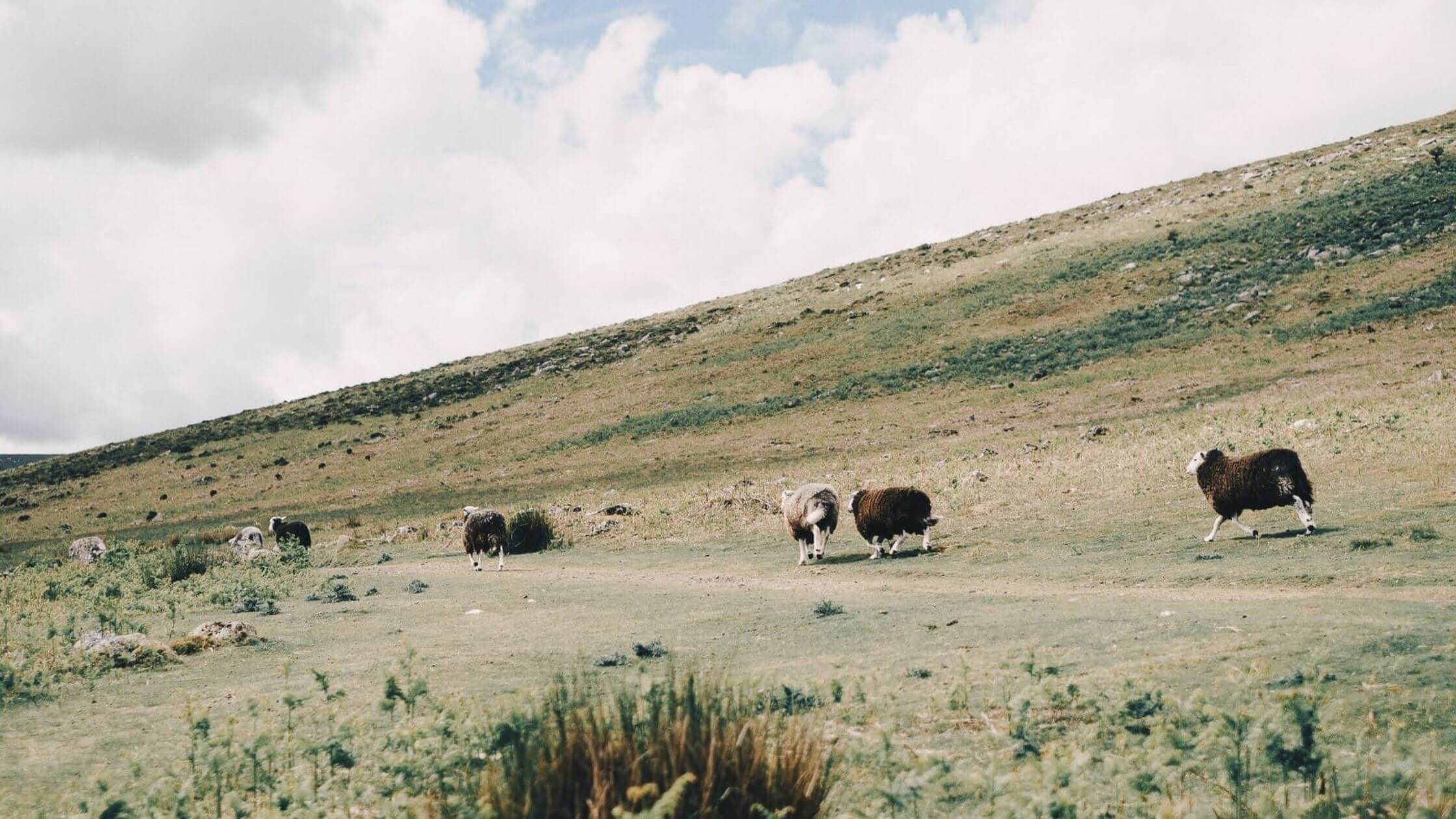
Sheep were the dominant livestock for cheese production. Image: Pexels
Yet, on the global culinary scene, Croatian cheeses remained shrouded in relative obscurity due to the lower levels of production, and the disconnect between traditional cheese producers and the international market.
However, this situation started to change when in 2017, Paški sir, a hard sheep’s cheese from the island of Pag with its delectable notes of wild sage and thyme, took home the gold for the best sheep’s milk cheese at the Global Cheese Awards, giving Croatia’s cheeses much-needed recognition.
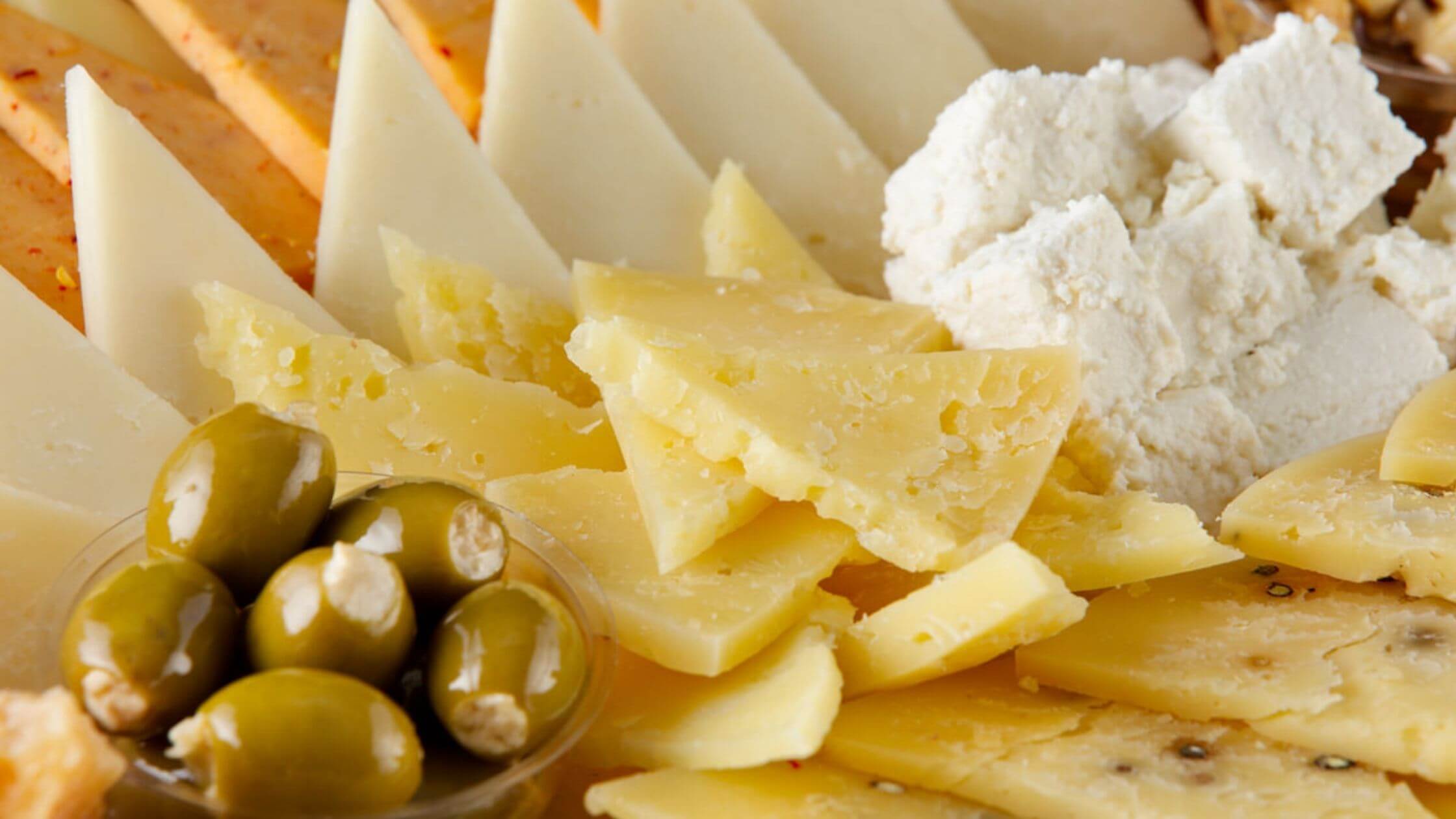
Paški sir. Image: Gligora/Facebook
In recent years, Croatia has seen the launch of new types of high-quality cheese, as both artisanal and industrial producers continue to experiment with new additions and methods. Don’t be surprised to find both industrially produced cheese, alongside homemade cheese, on the tables of Croatian families.
Croatian cheese galore
This might come as a surprise but despite its small production, Croatia still boasts a mind-boggling variety of delicious cheeses like Škripavac, Tounjski, Creski, Sir iz mješine, Prgica, Lećevački, and Basa, just to name a few!
These cheeses are typically made from goat (kozji), sheep (ovčji), cow’s (kravlji) milk, or a combination of the 3.
Like Croatian food in general, cheese offerings tend to vary between regions but one of the staple cheeses that can easily be found on the shelves of every grocery store is svježi sir, or fresh cheese.
Svježi sir is typically associated with the regions of Zagorje and Prigorje, about an hour's drive north of Zagreb. This creamy, delicate soft cheese is often consumed at breakfast and is made by processing cow’s milk which gives it its signature mild tanginess, comparable to greek yogurt.
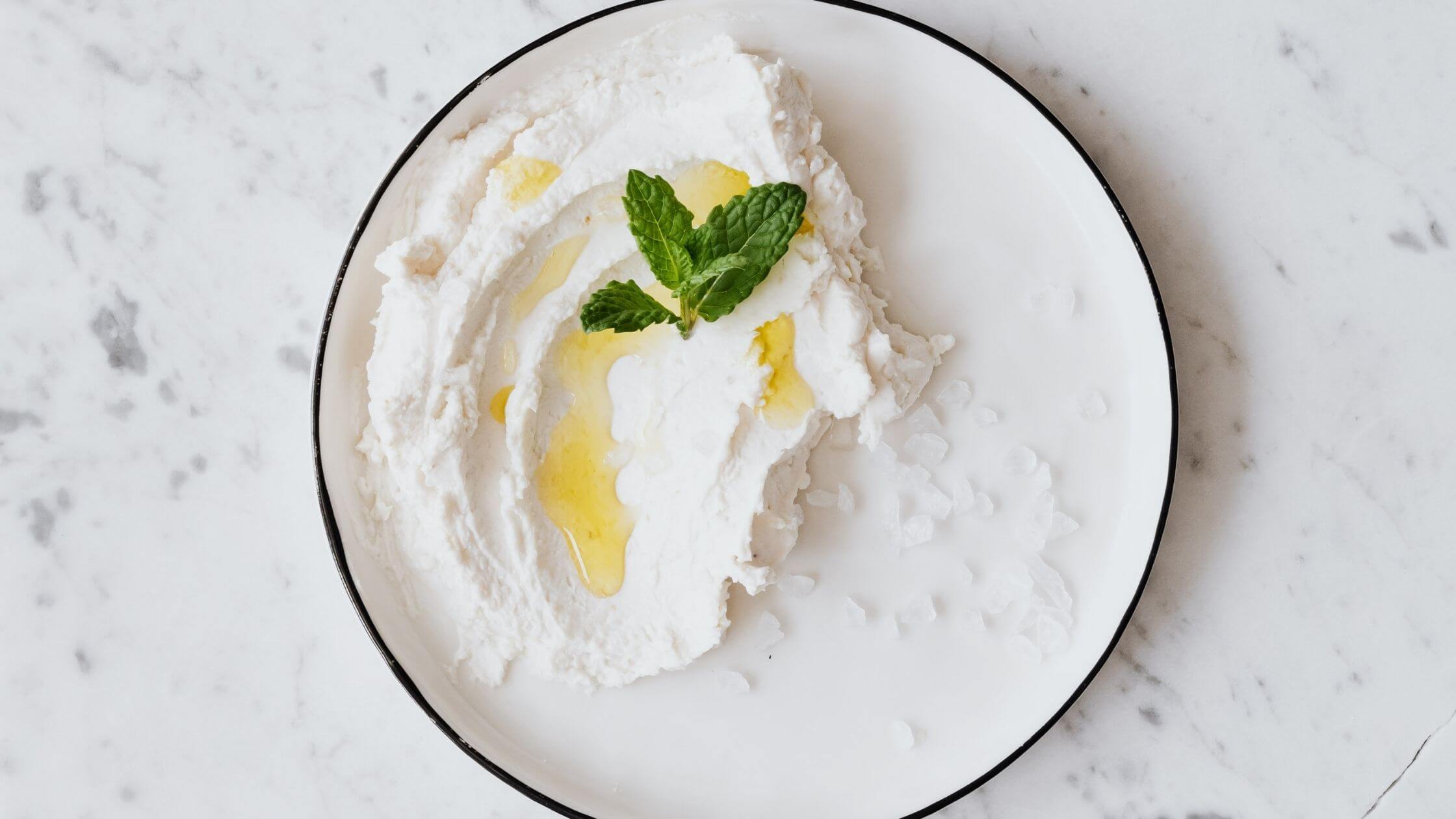
Svježi sir, Croatia’s unsung hero of cheese. Image: Pexels
Derivatives of Svježi sir also include Posni sir, a low fat, smooth, spreadable version, and Zrnati sir which has a grainy texture that most closely resembles cottage cheese. More recently, Icelandic Skyr has also found local popularity due to its high protein, low-fat content. Although consumed like yogurt, Skyr is actually a sour milk cheese.
Another type of Croatian cheese that is commonly sold at farmers' markets is what is known as Kuhani sirevi, or cooked cheese.
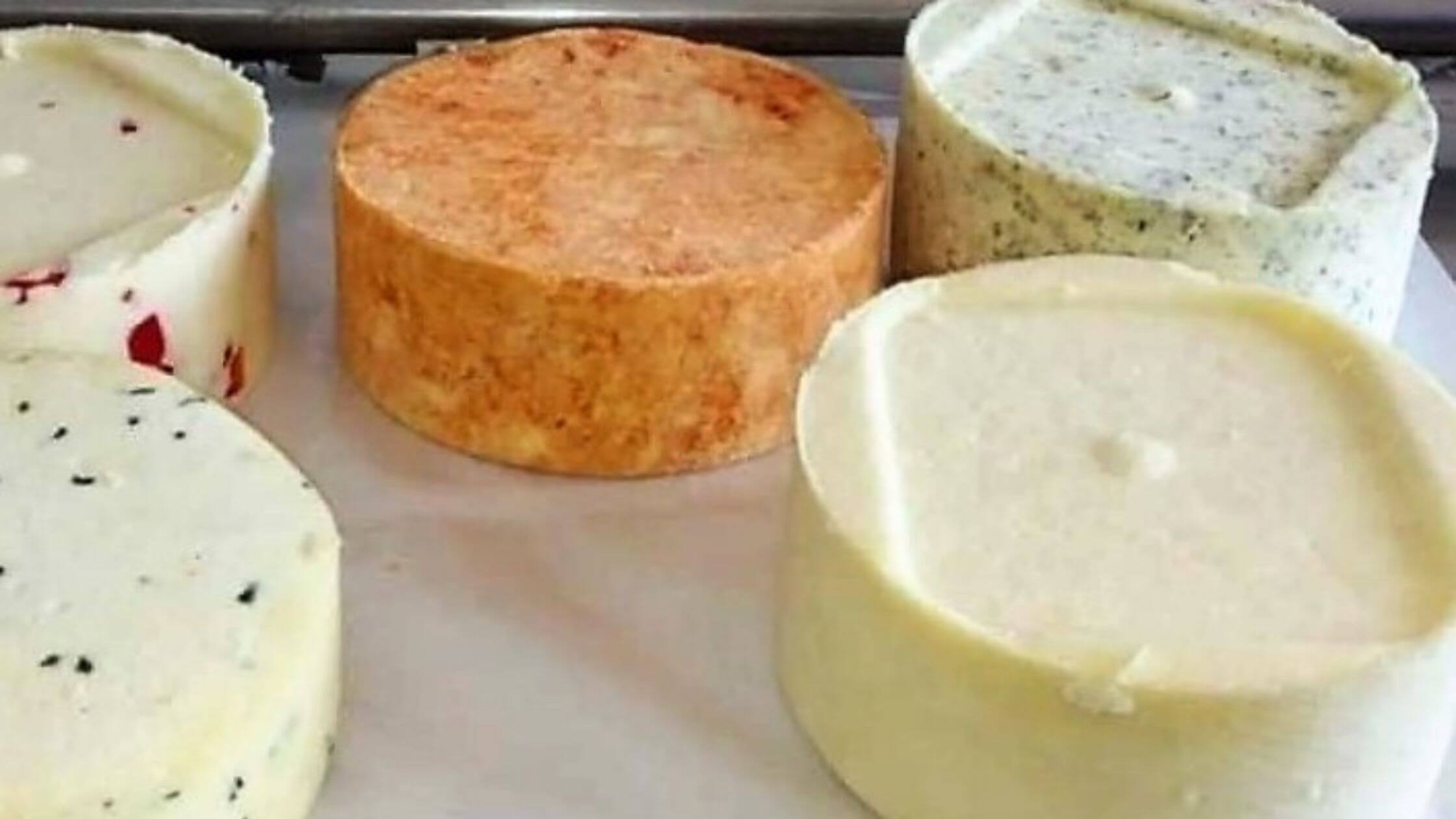
Different types of Kuhani sirevi. Image: Mate Bojčić/Facebook
Kuhani sirevi gets its name from the preparation method where cow’s milk is boiled (i.e. cooked) and curdled with vinegar, before the addition of salt and various spices such as paprika, basil, dill, and oregano.
The result is a semi-hard, rich cheese with a mild chew that when eaten on its own, has a sweet, clean, and grassy flavor. Some producers also smoke this cheese to produce a variant called Dimljeni sir, giving the cheese a delightful smoky aftertaste.

Aging Lećevački cheese. Image: Njuškalo.hr
Closer to (my) home, Lećevački sir may be one of the most widely recognized Dalmatian hard cheeses, having won several awards in the past. In fact, it was so well-received even back in the day that it was served in the Court of Austrian Emperor Francis Joseph (1848-1850).
This cheese originates from the Split hinterland and is made from the milk of either cow, sheep, or a mix of both. It has a mild, grassy aroma with a sharp, slightly spicy aftertaste as a result of the Mediterranean herbs (e.g. rosemary, thyme, sage) that the livestock graze on. Some culinary enthusiasts have even likened aged Lećevački sir, to Paški sir with its nutty notes and crunchy flavor crystals.
Sir iz mišine is a cheese produced in the regions of Zadar, Šibenik, Split and Dubrovnik. Sir iz mišine used to be made exclusively from surplus sheep’s milk, but is today produced with a mix of goat and cow milk.
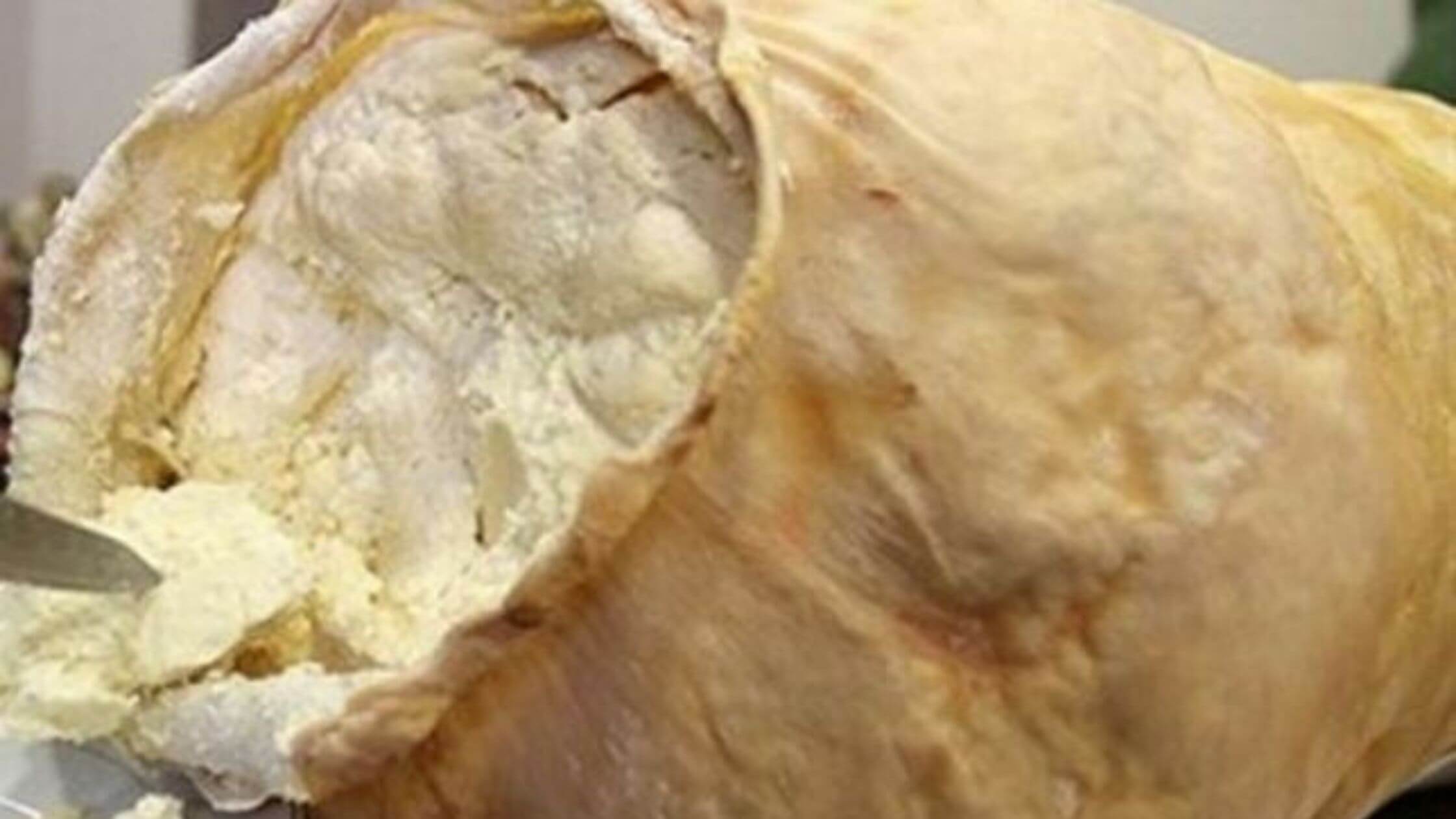
Sir iz mišine, sold from its lambskin sack. Image: Njuškalo.hr
What makes this cheesemaking process unique is that the milk is aged in lambskin sacks (mišina), made from 6-month-old lambs. When the cheese is ready in the fall, it is transported and sold from these same lambskin sacks. This aging technique also imparts a distinct earthy aroma to the cheese, which is often used as an ingredient to flavor various dishes.
Unfortunately, this cheese is becoming more scarce since the process is kept alive by only a handful of cheesemakers in the region, so do try it if you chance upon it in a market.
Last but not least, there is Težački sir. Težački sir is a hard pasteurized Dalmatian cow milk cheese, aged for a minimum of 4 months. Some producers use this cheese to produce other varieties such as Težački Iz Maslinove, where the same cheese is aged for at least 6 months in pressed olive skins. As the wheels age, the cheese absorbs the flavor and aroma of the olives.
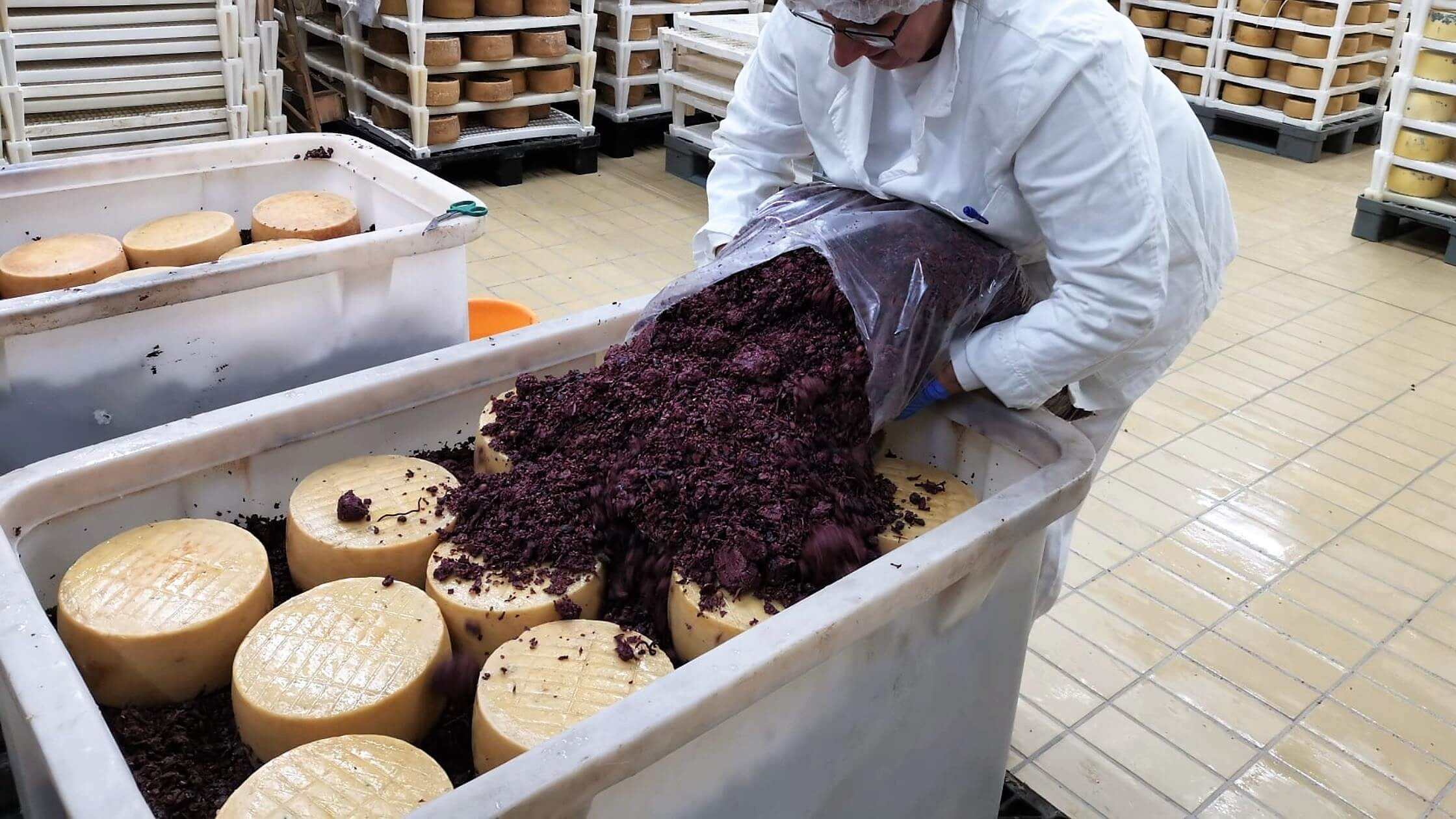
The making of Težački Iz Maslinove at Gligora. Image: Gligora/Facebook
BONUS! How to get the best of both worlds with a method of storing cheese that is unique to the area of Dalmatia and surrounding islands. Semi-hard cheeses are diced into cubes and stored in earthen, or glass containers filled to the brim with olive oil. This way, you get to try the best of Dalmatian cheese and the region’s luscious olive oil.

Sir u ulju, cheese preserved in olive oil for the best of both worlds! Image: My Tasty Pot/YouTube
A quick note on pasteurization
Some Croatian cheeses, in line with European cheese production standards, are made from “raw”, unpasteurized milk that comes straight from the animal. This process is forbidden and/or highly restricted by countries such as Canada, Australia, and the U.S.
Check for labels stating that the product is pasteurized - pasterizirano, or pasteurized and homogenized - pasteriziran i homogeniziran, or if you’re in a restaurant, ask staff for clarity on this.
All in all, I hope this short guide will help you traverse some language barriers and uncertainties when it comes to trying a slice of Croatia’s culinary wonders. Dobar tek!
For more on Croatian products, producers, companies, and exports, make sure to check out Made in Croatia.
Popular Lika Skripavac Cheese Expanding Sales Network and Offer
December the 28th, 2021 - The very popular Lika Skripavac cheese is set to expand not only its offer but also it's sales network following special recognition given to it by the European Union (EU) in the form of a much-sought-after label.
As Poslovni Dnevnik/Marta Duic writes, the much loved Lika Skripavac cheese has been awarded the European Union's label of protected geographical indication, the European Commission (EC) published in the Official Journal of the European Union on Tuesday.
As stated, the method of production of this special Croatian cheese, which became the 32nd Croatian product to boast EU protection, has been passed down from generation to generation and preserved to this day, and its crunchy properties, after which it got its name, occurs due to high fat and protein in the milk resulting from a specific diet the cows eat.
From the heart of Lika all the way down to Dubrovnik...
Native Lika products, including the Lika Skripavac cheese, are the basis of Vedrine's cheese business, which offers quite the variety of produce from Croatia's green heart.
This small family cheese factory is run by two married couples in the village of Brezik below Vaganski vrh on Velebit, and their plant processes about 180,000 kilograms of milk annually, and has more than 20 products in its range.
They recently opened a store in the town of Samobor, and at the beginning of next year they will open their seventh point of sale, in the Crnomerec district of Zagreb. In Samobor, consumers were introduced to some of the novelties Vedrine has on offer - small fruit yogurts, boiled cheese with garlic and butter in four variants, natural and salty, and butters with garlic and chives, which are set to reach the market in the spring.
In addition to their points of sale at markets in Zagreb and Zadar, this cheese factory also cooperates with specialised stores in Zagreb, Sibenik, Split and Dubrovnik.
"Before the coronavirus pandemic struck, we sold our products at the Samobor market, Samobor is an interesting market and people here really like domestic production. We haven’t hired anyone new, I do all of the work, but with the new location we’re opening we’ve hired one person. We have established cooperation with the Better Tomorrow Association of Persons with Disabilities by selling their pasta, as well, and we're looking for more small producers to work with,'' said Ana Todoric from Vedrine.
For more, check out Made in Croatia.
World Food Atlas Rates Two Croatian Cheeses Among Best in World!
June the 5th, 2021 - When it comes to what Croatia has to offer, most people will likely immediately think of the sun, the glorious Adriatic sea, the many islands and the wine. Croatin gastronomy is certainly up there on that same list, and Croatian cheeses are becoming more and more well known internationally. Two Croatian cheeses are doing so well, in fact, that they've been ranked among the planet's very best.
Pag cheese is probably the first of the Croatian cheeses to spring to the mind of the majotiy of people remotely familiar with the country's production of this much loved food item.
The bizarre moonlike northern Adriatic island of Pag, the northern part of which belongs to Lika-Senj County and the central and southern part to Zadar County, is home to some of the most mouthwatering Croatian cheese for those who aren't lactose intolerant, of course. This island produces cheese which is then exported and taken all over the world to be enjoyed by cheese lovers, and it has firmly placed the entire country on the cheese map of the globe.
The World Food Atlas from Taste Atlas has picked up on the treasure trove which is Croatian gastronomy, more precisely on Croatian cheeses, and has declared two domestic products to be among the best the world has to offer.
As Poslovni Dnevnik writes, The World Food Atlas is a well-known website which is a must-browse for all food lovers or ''foodies'', and now they have published a revised ranking with the world's best cheeses.
On the list of the top 100 best rated cheeses according to the votes of the audience, there are as many as two Croatian cheeses. Skripavac took a more than respectable 61st place, and the famous, aforementioned Pag cheese has taken an extremely impressive 14th place.
If you're a cheese lover, you can view the entire list by clicking here.
For more, make sure to follow Made in Croatia.
Famed Pag Cheese Producers Turn to Production of Cream Cheese
The famous Croatian Pag cheese producers are known throughout the world, and this company from the island of Pag is turning towards cream cheese production, regardless of the current dire economic circumstances which have arisen as a result of the ongoing coronavirus pandemic.
As Novac/Jozo Vrdoljak writes, the Pag cheese producers are launching a new investment cycle and, as Martina Pernar, the director of exports and marketing at the company revealed, it is preparing to produce two new products. Pag cheese producers are, as she explained, turning their attention to the globally popular cheese spreads. The company has already invested in the purchase of a new machine on which it will produce two types of spreads.
''We'll produce two types of cheese spread. One from sheep's and cow's milk, and the other will be enriched with truffles,'' said Pernar, adding that tere are few delicatessen cheese spreads already out on the market in Croatia, so they hope that these new products from the Pag cheese producers will also go well with consumers.
Solar power plant
According to her, the Pag cheese factory applied to the tender of the Ministry of Agriculture in order to provide part of the funds from Measure 4.2.1. and is now awaiting the results of the move.
''We've announced the purchase of machinery, commercial vehicles and solar power that we'll install on the roof of our production plant. We also invested in the purchase of a machine for snack packaging for cheese cubes and packages of 100 grams with three slices of cheese. In addition to the machine, we also invested in packaging,'' noted Martina Pernar.
Despite the globally difficult situation as a result of the pandemic, the Pag cheese factory didn't lay off any workers due to financial issues. Martina Pernar says that, in as much as was possible, they protected their workers and partners and implemented rigorous protection measures. So far, they have not had a single case of coronavirus. Due to lockdown and the resulting difficulties in distribution, they have increased sales through the web shop.
''We redesigned our website and this type of sales channel achieved excellent results. We've also introduced card payments, which is something we've never had so far,'' explains the director of exports and marketing, adding that they have focused their marketing on the promotion of the web shop.
''Of course, you can’t compare a web shop to chain store orders, but we got a sales channel that did well during the spring lockdown,'' she said.
''We have designed some recipes for our customers based on our products. In that part, we expect an increase for the festive period, especially in the part regarding gift packages and gift packaging,'' she added.
The new season for the Pag cheese producers starts in January 2021. According to Martina Pernar, they have high expectations in the Pag cheese factory.
''This year, at the peak of production, we were faced with the threat of the pandemic. We were afraid for the health of our workers and we also had fears about the potential stopping of production, but everything went well. We managed to pay off all our subcontractors and we're ending the year solidly. Right now comes the time when Pag's shepherds have the most work on their hands. Sheep lambing begins, followed by milking and the production of Pag cheese, which lasts from January to July. We own a herd of about 3,000 sheep, and luckily we marketed most of the lamb before the spring lockdown,” she says, adding that she hopes the situation in the period to come will begin to normalise.
For the latest travel info, bookmark our main travel info article, which is updated daily.
Read the Croatian Travel Update in your language - now available in 24 languages
Istrian Company Latus Creates First Croatian Mozzarella
As Poslovni Dnevnik/Marta Duic writes on the 30th of October, 2020, the Istrian company Latus, which has been operating since back in 2001, is located in the small town of Orbanici near Zminj, and the initiators of this dairy business, Maja and Sandi Orbanic, are pioneers in this industry because cheese production isn't as popular on Croatia's largest peninsula as the production of wine and olive oil is.
Latus, which is family run and boasts about 20 cows, is a continuation of the tradition as the Orbanic's have been engaged in cattle breeding for generations.
"It's a type of love that lasts a long time, it's what draws us and makes us even better. Cheese-making in Istria is something that's been going on only in more recent times, and our Istrian cows provide five litres of milk a day, while for a kilo of cheese, you'd need ten litres. Although it was difficult at the beginning, it didn't discourage us.
Once upon a time, cheeses in Istria were small, they were kept in wheat, and the real development began in the late 80s and early 90s, and then serious production began. At that time, Istrians had more sheep than cows and few people produced cheese at home, so we decided to change that,'' Maja Orbanic stated as she recalled the beginnings of Latus' venture.
The first cheese they made was Zminj cheese, a semi-hard cheese without rind that matures in a vacuum, followed by an Istrian cheese done ''according to nona's recipe'', but again, this was something different because the milk is pasteurised. When Latus started with production, they had 160 litres of milk a day, and today they process as much as 10,000 litres and have 20 products in their assortment that they offer for tasting.
Among them are cheese with pepper, truffles, indigenous Istrian and Zminj cheese, cottage cheese and other dairy products such as yogurt and whey. In addition to the tasting room, they also have a small shop on the ground floor, and today they cooperate with a dozen subcontractors from across Istria and produce 120 tonnes of cheese annually.
"When we started, we had 24 subcontractors, and we say that the ten that we're cooperating with today are endemic. However, the quality of Istrian milk is top notch, our cows give up to 300 litres a day and are on free grazing from April to November and the rest of the year they're in the barn,'' explained Maja Orbanic.
It is interesting to note that last autumn they produced the very first Croatian mozzarella, and their most famous cheese - Veli Joze, which won the title of Croatian champion three times, was (like most great things) created by accident. The mozzarella expert is Sandi, and they explained that it is "not mozzarella for salad, but for taste". They produce it in small quantities, to order, and in this field they also cooperate with Istrian pizzerias.
Latus otherwise boasts 27 employees, eight women work in the production system itself, and they also have nine retail outlets.
"We sell as much as 90 percent of production in Istria and a little less in stores in Zagreb such as Mrkvica, Grga Cvarka and Speceraj and in Slovenia. We also export our products through tourists who come for tastings,'' said Orbanic.
The tasting room was renovated five years ago, and since rural tourism is flourishing in the interior of Istria, many foreign tourists are their guests. However, Orbanic says that when it comes to group visits to cheese dairies and tastings, it's usually Croatian visitors turning up in groups, while foreigners lean a bit more more towards individual visits.
"There are a lot of holiday homes around us and foreigners who come to us expect this authentic experience, explore the territory and Istrian customs, and this is our great advantage because that is exactly what we offer.
If our olive growers and winemakers weren't so good, it would be harder for us to position ourselves on the market like this. They work hard from year to year and our entire gastro scene is growing thanks to their achievements, says Orbanic.
The next cheese they're working on and currently experimenting with is brie, and when satisfaction is reached, that too will take to the market.
For the last significant investments in the dairy business, Latus withdrew funds from the EU for equipping its barns and bettering its machinery, and they also applied for the recently announced tender for renewable energy sources, so they're far from lacking in plans for further growth.
For the latest travel info, bookmark our main travel info article, which is updated daily.
Read the Croatian Travel Update in your language - now available in 24 languages


